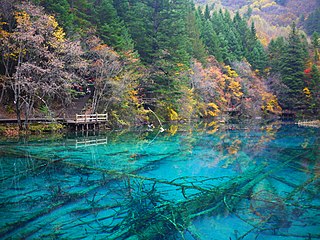
Sichuan is a landlocked province in Southwest China occupying most of the Sichuan Basin and the easternmost part of the Tibetan Plateau between the Jinsha River on the west, the Daba Mountains in the north and the Yungui Plateau to the south. Sichuan's capital city is Chengdu. The population of Sichuan stands at 83 million. Sichuan neighbors the Qinghai to the northwest, Gansu to the north, Shaanxi to the northeast, Chongqing to the east, Guizhou to the southeast, Yunnan to the south, and the Tibet Autonomous Region to the west.

Amdo is one of the three traditional regions of Tibet, the others being U-Tsang in the west and Kham in the east. Ngari in the north-west was incorporated into Ü-Tsang. Amdo is also the birthplace of the 14th Dalai Lama. Amdo encompasses a large area from the Machu to the Drichu (Yangtze). Amdo is mostly coterminous with China's present-day Qinghai province, but also includes small portions of Sichuan and Gansu provinces.
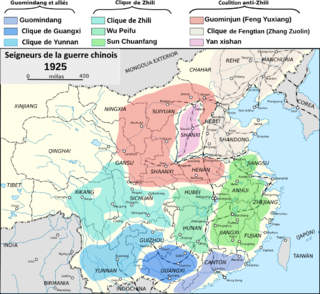
Xikang was an illusory province formed by the Republic of China in 1939 on the initiative of prominent Sichuan warlord Liu Wenhui and continued by the early People's Republic of China. It comprised most of the Kham region, where the Khampa, a subgroup of the Tibetan people, live. The then independent Tibet controlled the portion of Kham west of the Upper Yangtze River. The nominal Xikang province also included in the south the Assam Himalayan region that Tibet had recognised as a part of British India by the 1914 McMahon Line agreement. The eastern part of the province was inhabited by a number of different ethnic groups, such as Han Chinese, Yi, Qiang people and Tibetan, then known as Chuanbian (川邊), a special administrative region of the Republic of China. In 1939, it became the new Xikang province with the additional territories belonging to Tibetan and British control added in. After the People's Republic of China invaded and occupied Tibet, the earlier nationalist imagination of Xikang came to fruition.

Lithang Tulku Tenzin Delek Rinpoche or Tenzing Deleg was a Tibetan Buddhist leader from Garze, Sichuan. He is also known for working to develop social, medical, educational and religious institutions for Tibetan nomads in eastern Tibet, as an advocate for environmental conservation in the face of indiscriminate logging and mining projects, and as a mediator between Tibetans and Chinese.

Ya'an is a prefecture-level city in the western part of Sichuan province, China, located just below the Tibetan Plateau. The city is home to Sichuan Agricultural University, the only 211 Project university and the largest regional comprehensive university in Ya'an. As of the 2020 census, its population was 1,434,603, of whom 623,541 lived in the built-up area made of Yucheng and Mingshan districts.

The Tibetan fox, also known as Tibetan sand fox, is a species of true fox endemic to the high Tibetan Plateau, Ladakh plateau, Nepal, China, Sikkim, and Bhutan, up to elevations of about 5,300 m (17,400 ft). It is listed as Least Concern in the IUCN Red List, on account of its widespread range in the Tibetan Plateau's steppes and semi-deserts.

Ngawa Tibetan and Qiang Autonomous Prefecture, also known as Aba, is an autonomous prefecture of northwestern Sichuan, bordering Gansu to the north and northeast and Qinghai to the northwest. Its seat is in Barkam, and it has an area of 83,201 km2 (32,124 sq mi). The population was 919,987 in late 2013.
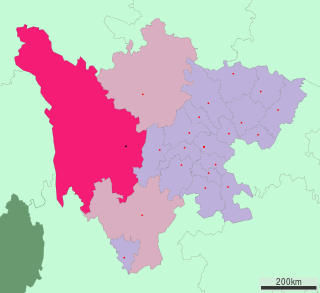
Garzê Tibetan Autonomous Prefecture also known as Ganzi — is an autonomous prefecture in the western arm of Sichuan province, China, bordering Yunnan to the south, the Tibet Autonomous Region to the west, and Gansu to the north and northwest. It is sometimes spelled "Kardze" and "Garzin" by non-government sources.

Zhao Erfeng (1845–1911), courtesy name Jihe, was a late Qing Dynasty official and Han Chinese bannerman, who belonged to the Plain Blue Banner. He was an assistant amban in Tibet at Chamdo in Kham. He was appointed in March, 1908 under Lien Yu, the main amban in Lhasa. Formerly Director-General of the Sichuan-Hubei Railway and acting viceroy of Sichuan province, Zhao was the much-maligned Chinese general of the late imperial era who led military campaigns throughout Kham and eventually reaching Lhasa in 1910, earning himself the nickname "the Butcher of Kham" and "Zhao the Butcher".
The Gyalrongic languages constitute a branch of the Qiangic languages of Sino-Tibetan, although some propose that it may be part of a larger Rung languages group, and do not consider it to be particularly closely related to Qiangic, suggesting that similarities between Gyalrongic and Qiangic may be due to areal influence. However, other recent work suggests that Qiangic as a whole may in fact be paraphyletic, with the only commonalities of the supposed "branch" being shared archaisms and areal features that were encouraged by contact. Jacques & Michaud (2011) propose that Qiangic including Gyalrongic may belong to a larger Burmo-Qiangic group based on some lexical innovations.

In Sichuan province, in an area incorporating the traditional Tibetan areas Kham and Amdo, Tibetan monks and police clashed in riots on 16 March in Ngaba county (Aba) after the monks staged a protest. It formed part of the 2008 Tibetan unrest and was one of two major events to happen in Sichuan during 2008, the other being the 2008 Sichuan earthquake in May 2008.

Zhouqu County is a county in the eastern extremity of the Gannan Tibetan Autonomous Prefecture in the south of Gansu Province, the People's Republic of China, with the Bailong River flowing through its confines; it borders Sichuan province to the south. In 2010 its population was 134,000 people.

Baoxing County is one of the seven counties under the administration of Ya'an City, in west-central Sichuan Province, China, located along the upper reaches of the Qingyi River. It is a vital geopolitical crossroad, transportation hub, and most importantly, a biodiversity hotspot and type locality for many endangered species, including giant panda, dove tree, Chinese thrush, golden snub-nosed monkey and Oreolalax popei. UNESCO named Baoxing as a part of the World Heritage Site, the "Sichuan Giant Panda Sanctuaries - Wolong, Mt Siguniang and Jiajin Mountain" in 2006.

Ngawa County, or Aba or Ngaba, is a county in the northwest of Sichuan Province, China. It is under the administration of the Ngawa Tibetan and Qiang Autonomous Prefecture. It is located in the remote northwestern part of the prefecture, on the border with Qinghai and Gansu. The county seat is Ngawa Town.

Sêrtar County or Serthar County is a county in the northwest of Sichuan Province, China, bordering Qinghai province to the north. It is one of the 18 counties under the administration of the Garzê Tibetan Autonomous Prefecture, covering some 9340 square kilometres. Sêrtar, which means "golden freedom" in Tibetan, lies in the southeast of the Tibetan Plateau and in the historical region of Kham. The vast majority of the population is Tibetan, followed by Han Chinese.
Tongkor or Tongkhor Monastery, also known as Ganden Chokhorling or Dangar Gompa, is a Tibetan Buddhist monastery located in Zithang Town, Garzê County, Garzê Tibetan Autonomous Prefecture, Sichuan, China.
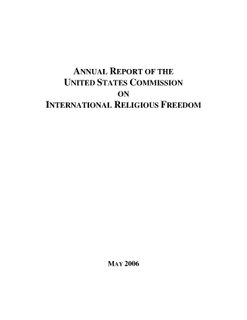
The Phuntsog self-immolation incident occurred when a Tibetan Buddhist monk by the name of Rigzin Phuntsog self-immolated on March 16, 2011 in Ngawa County, Ngawa Tibetan and Qiang Autonomous Prefecture, Sichuan province, People's Republic of China. This was followed by another self-immolation incident on September 26, 2011. By March 2012, more than thirty other Tibetans had self-immolated as a protest against Chinese rule of Tibet.
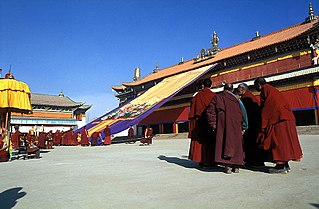
Kirti Gompa, is a Tibetan Buddhist monastery founded in 1472 and located in Ngawa, Sichuan province, in China, but traditionally part of Amdo region. Numerous other associated Kirti monasteries and nunneries are located nearby. As of March 2011, the Kirti Gompa was said to house 2,500 monks. Between 2008 and 2011, mass arrests and patriotic re-education programs by Chinese authorities have targeted the monks, reducing the population substantially to 600 monks. The wave of Tibetan self-immolations began at Kirti Gompa.

As of March 2022, 158 monks, nuns, and ordinary people self-immolated in Tibet since 27 February 2009, when Tapey, a young monk from Kirti Monastery, set himself on fire in the marketplace in Ngawa City, Ngawa County, Sichuan. According to the International Campaign for Tibet (ICT), "Chinese police have beaten, shot, isolated, and disappeared self-immolators who survived."

Li Jingquan was a Chinese politician and the first Party Committee Secretary (governor) of Sichuan following the establishment of the People's Republic of China in 1949. He supported many of Mao Zedong's policies including the Great Leap Forward.

















